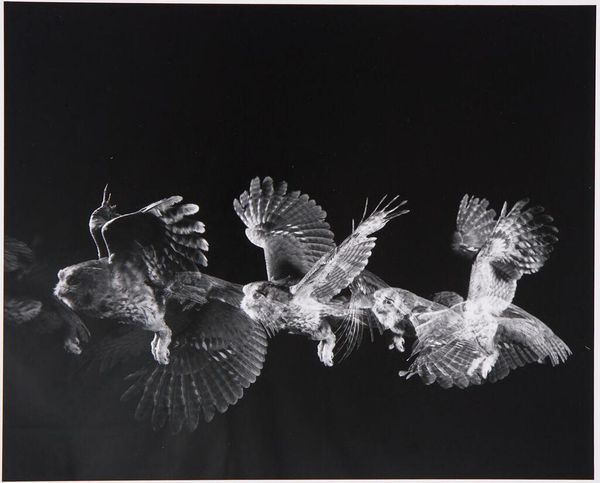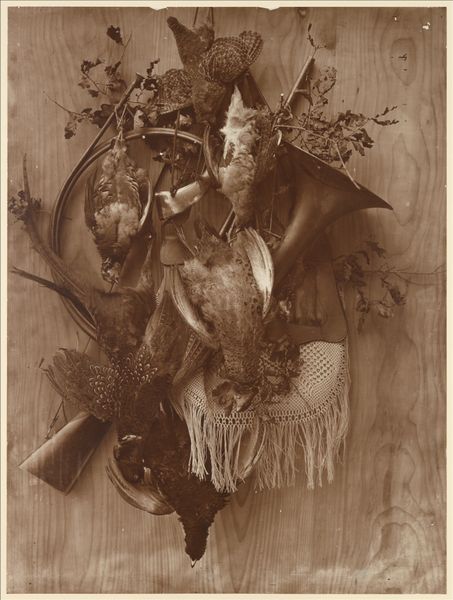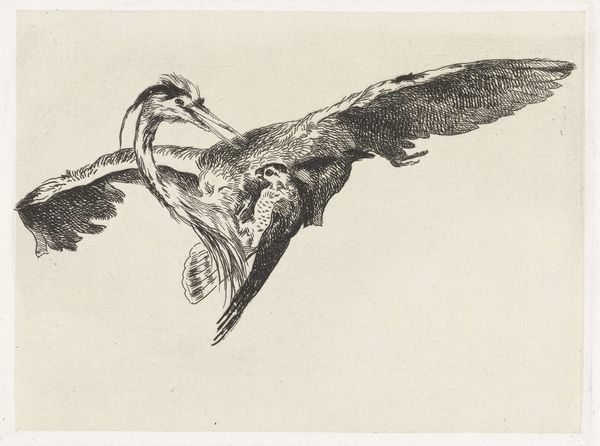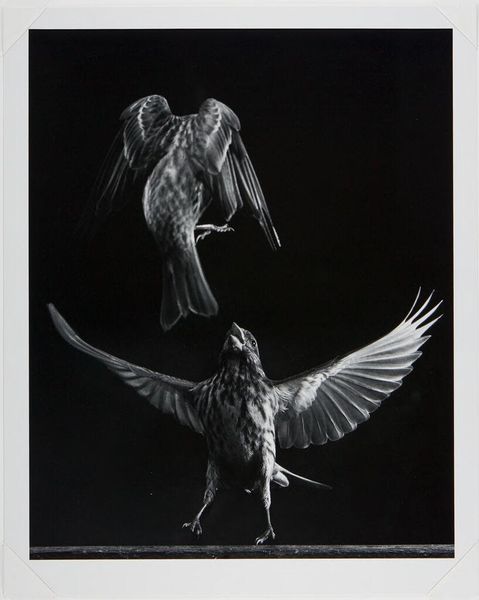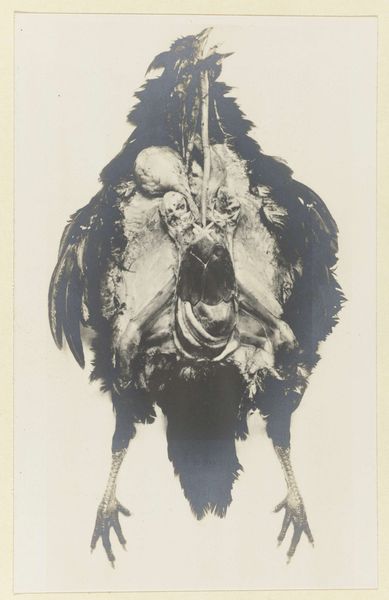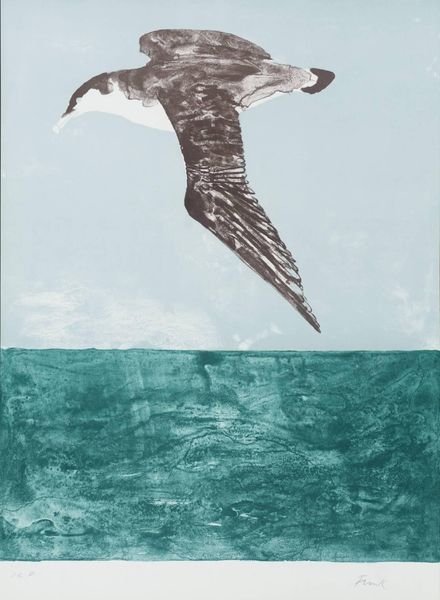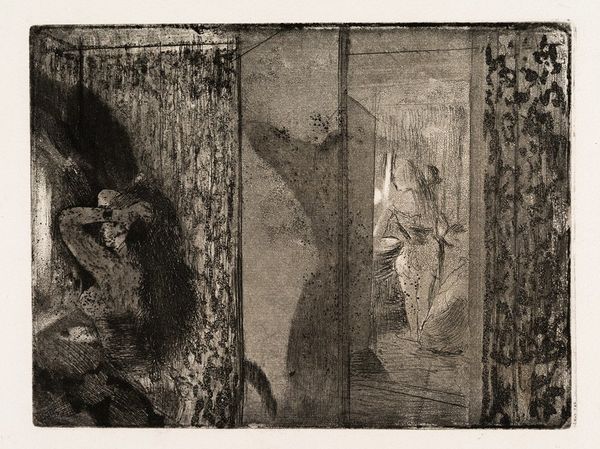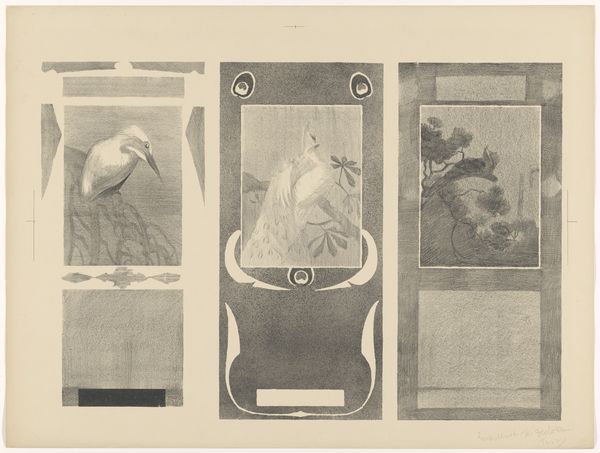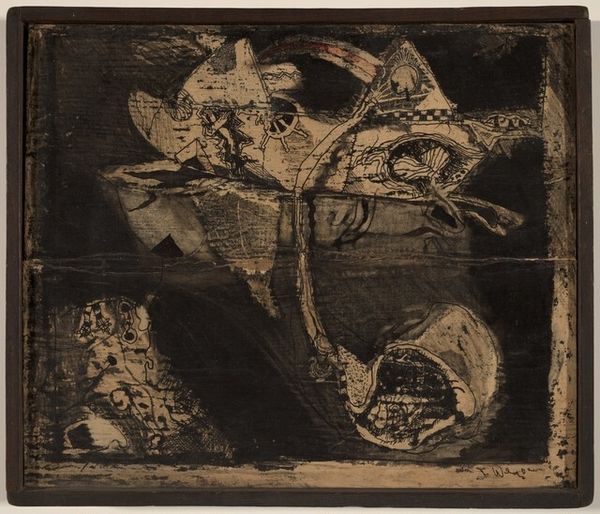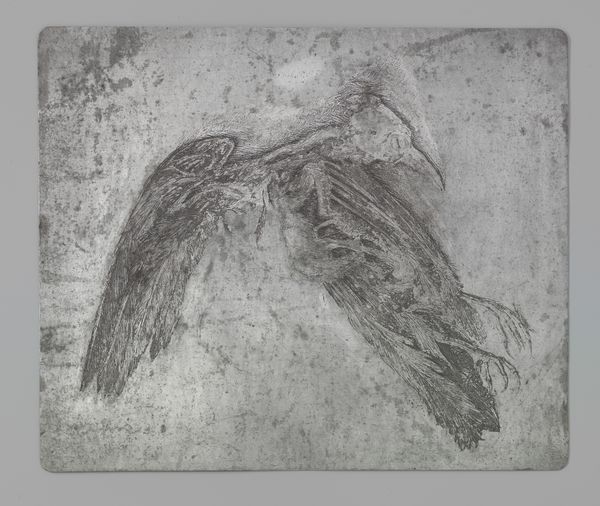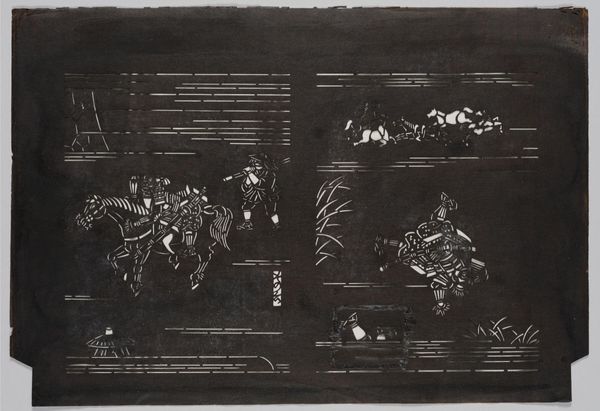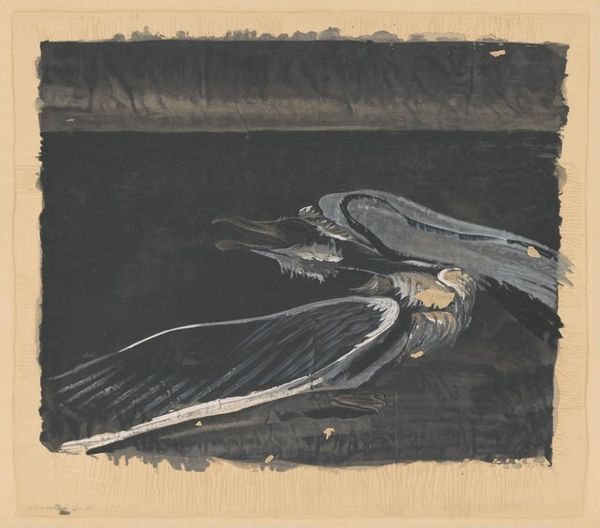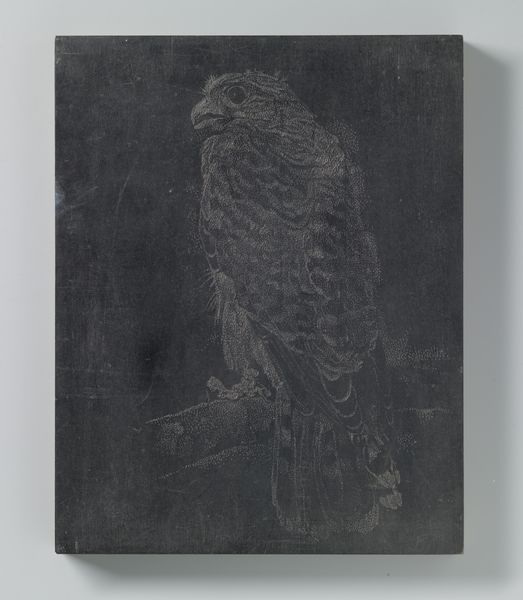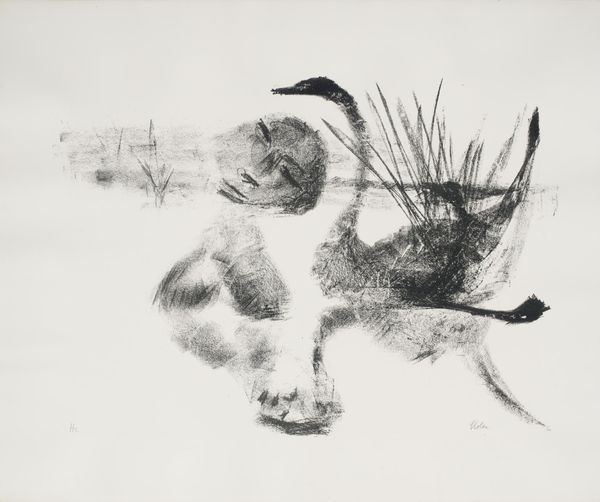
Dimensions: 307 × 402 mm
Copyright: Public Domain
Editor: Here we have "The Upper Part of a Door," an etching on paper created by Félix Bracquemond in 1852. The texture created by the etching technique gives a stark and rather morbid feel. What strikes you when you look at this? Curator: Immediately I’m drawn to the choice of subject matter, especially within the context of 19th-century France. The depiction of dead animals—a bat, several birds—tacked to a wooden door goes against the grain of idealized Romantic landscapes and grand history paintings. What could this signify about Bracquemond’s relationship to artistic conventions of his time? Editor: That's a really interesting point. So you’re suggesting the subject challenges established hierarchies of art? It almost feels like elevating something considered ‘low’ to the level of ‘high’ art. Curator: Precisely. The very act of etching, a process requiring physical labor and a command of materials, moves away from notions of artistic genius being purely intellectual or divinely inspired. Consider, too, that printmaking allowed for wider distribution of images. Was Bracquemond aiming to democratize art, to bring the “lower” subjects and artistic processes to a wider audience? And consider the material itself: the texture of the paper, the lines etched onto the plate. Editor: It makes me think about the artist's role as not just a creator, but almost a manufacturer too, participating in a burgeoning consumer culture. It really makes you rethink "realism" by representing this subject matter so straightforwardly, avoiding beautification. Curator: Exactly! And even realism wasn't exempt from being complicit in maintaining capitalist power. "The Upper Part of a Door" and its specific visual language may serve as critical reflection of that relationship. We see both sides now, I hope? Editor: I do, that makes perfect sense! Thanks for pointing that out!
Comments
No comments
Be the first to comment and join the conversation on the ultimate creative platform.
